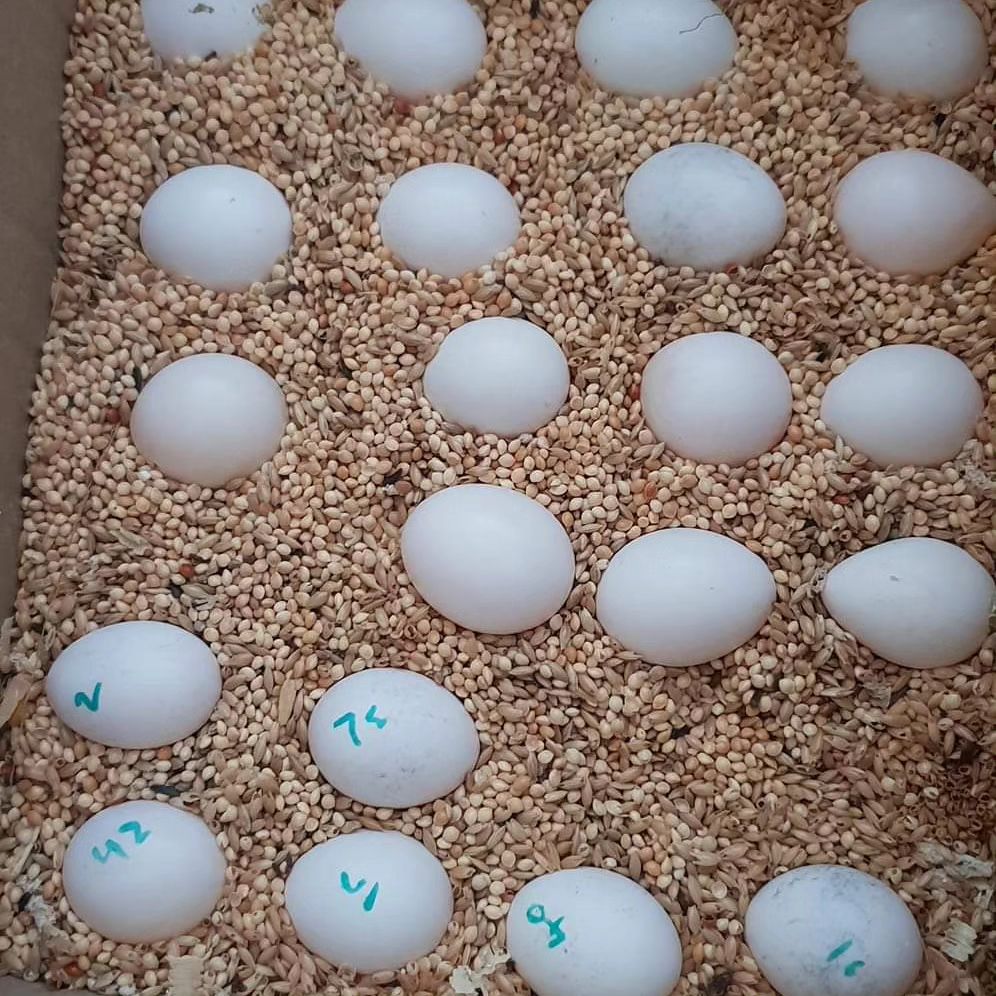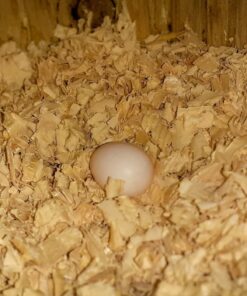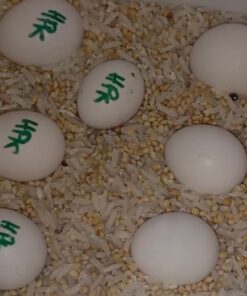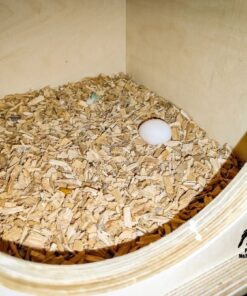Article on Bronze Winged Pionus Eggs
1. Introduction
a. Overview of Bronze Winged Pionus:
The Bronze Winged Pionus (Pionus chalcopterus) is a fascinating parrot species native to South America, known for its striking plumage and relatively calm demeanor. These medium-sized parrots are favored by aviculturists for their charming personalities and unique vocalizations. Understanding the breeding and egg-laying habits of Bronze Winged Pionus is crucial for both breeders and bird enthusiasts aiming to ensure the health and vitality of these birds.
b. Importance of Understanding Egg Characteristics:
Breeding Bronze Winged Pionus can be challenging without a thorough understanding of their egg characteristics and incubation requirements. Proper knowledge of egg care can lead to higher hatch rates and healthier chicks, contributing to the species’ preservation and well-being.
2. The Bronze Winged Pionus
a. Habitat and Natural Behavior:
In the wild, Bronze Winged Pionus are typically found in the subtropical and tropical forests of Venezuela, Colombia, Ecuador, and Peru. They thrive in humid environments with plenty of foliage, which offers both food sources and nesting sites. These birds are known for their strong social bonds, often forming monogamous pairs that last for life.
b. Physical Characteristics of Adult Birds:
The Bronze Winged Pionus is easily recognizable by its iridescent blue wings, bronze-green body, and a distinctive white patch around its beak. Adult birds usually reach about 28 cm (11 inches) in length and weigh around 250-300 grams. Their calm temperament and moderate noise level make them suitable for both aviculturists and pet owners.
3. Breeding Habits of Bronze Winged Pionus
a. Mating Season and Pairing:
Bronze Winged Pionus typically begin their breeding season in the spring. During this time, males engage in courtship behaviors, such as vocalizations and feeding the female. Once a pair bond is established, they remain together throughout the breeding season, often producing one or two clutches.
b. Nesting Preferences and Locations:
In their natural habitat, Bronze Winged Pionus prefer to nest in hollow tree cavities, often several meters above the ground. In captivity, providing a suitable nesting box that mimics their natural environment is crucial. These boxes should be spacious enough to accommodate the female and her clutch comfortably.
4. Characteristics of Bronze Winged Pionus Eggs
a. Bronze Winged Pionus Eggs Size and Appearance:
Bronze Winged Pionus eggs are small, typically measuring around 2.5 cm in length. They are white and oval-shaped, with a smooth texture. The size and appearance of the eggs are consistent across clutches, making it easier to identify and monitor them.
b. Incubation Period and Conditions:
The incubation period for Bronze Winged Pionus eggs is approximately 26-28 days. During this time, maintaining a stable temperature and humidity level is critical. The ideal incubation temperature is around 37.5°C (99.5°F), with humidity levels between 55-65%.
c. Fertility Rates and Influencing Factors:
Fertility rates in Bronze Winged Pionus can vary based on several factors, including the age and health of the breeding pair, diet, and environmental conditions. Ensuring the birds have a nutrient-rich diet and a stress-free environment can significantly improve fertility rates.
5. Bronze Winged Pionus Eggs-Laying Process
a. Frequency and Number of Eggs per Clutch:
A typical clutch for a Bronze Winged Pionus consists of 3-4 eggs, though this can vary. The female usually lays one egg every other day, allowing her to dedicate time to each egg before the next one arrives.
b. Behavioral Changes in Females During Egg-Laying:
During the egg-laying period, female Bronze Winged Pionus may exhibit changes in behavior, such as increased territoriality, nesting activity, and reduced interaction with humans or other birds. It’s essential to provide her with a quiet, safe space to reduce stress during this critical time.
6. Incubation and Hatching
a. Role of Parents in Incubation:
In the wild and captivity, both parents may share the responsibility of incubating the eggs, although the female usually takes on the primary role. The male often assists by bringing food to the female and protecting the nest site from potential threats.
b. Monitoring Egg Development:
Regularly monitoring the development of the eggs is crucial to ensure they are progressing well. Candling, a process where a bright light is shone through the egg to check for signs of growth, can help detect any issues early on.
c. Signs of Healthy vs. Unhealthy Eggs:
Healthy eggs will show steady growth and development when candled, with visible veins and movement as the embryo matures. Unhealthy eggs may appear cloudy, have no visible development, or show signs of bacterial infection.
7. Challenges in Breeding Bronze Winged Pionus
a. Common Breeding Challenges:
Breeding Bronze Winged Pionus can be challenging due to factors like low fertility rates, environmental stressors, and disease. Providing an optimal environment, including proper diet and nesting conditions, can mitigate many of these challenges.
b. Egg Binding and Prevention:
Egg binding, where a female is unable to lay an egg, is a serious condition that can be life-threatening. Preventing egg binding involves ensuring the female has access to a calcium-rich diet, proper hydration, and a stress-free environment.
8. Caring for Bronze Winged Pionus Eggs
a. Artificial Incubation Techniques:
In cases where natural incubation is not possible, artificial incubation may be necessary. This involves placing the eggs in an incubator that mimics the natural conditions, ensuring consistent temperature and humidity levels.
b. Humidity and Temperature Control:
Maintaining the right humidity and temperature is critical for successful hatching. Too much or too little humidity can cause the eggs to either dry out or become too moist, leading to developmental issues.
c. Handling Eggs Safely:
Handling Bronze Winged Pionus eggs should be done with care to avoid damaging the delicate shell or disturbing the embryo. Always wash hands before touching the eggs, and limit handling to essential monitoring.
9. Post-Hatching Care
a. Early Days of Hatchlings:
Once the chicks hatch, they are entirely dependent on their parents or caregivers for warmth, nutrition, and protection. The first few days are critical, with frequent feeding and careful monitoring to ensure the chicks are thriving.
b. Feeding and Nutrition:
Proper nutrition is vital during the early stages of a chick’s life. In the wild, parents regurgitate pre-digested food for their young. In captivity, hand-rearing may be necessary, using a specialized formula designed for parrot chicks.
c. Socialization and Development:
Socialization is key to the healthy development of Bronze Winged Pionus chicks. Gradual exposure to human interaction and other birds can help them develop into well-adjusted adults.
10. Expert Insights on Pionus Breeding
a. Tips from Avian Breeders:
Experienced avian breeders recommend maintaining a clean, stress-free environment for breeding pairs. They also emphasize the importance of a balanced diet rich in vitamins and minerals to support egg production and chick health.
b. Case Study: Successful Breeding of Bronze Winged Pionus:
A case study of a successful Bronze Winged Pionus breeding program highlights the importance of patience, consistency, and attention to detail. The program saw a high hatch rate due to meticulous care and optimal breeding conditions.
11. Future of Bronze Winged Pionus Breeding
a. Conservation Efforts:
As wild populations of Bronze Winged Pionus face threats from habitat loss and illegal trade, conservation breeding programs are becoming increasingly important. These programs aim to maintain genetic diversity and support reintroduction efforts.
b. Emerging Techniques in Breeding:
Advances in breeding techniques, such as assisted reproduction and genetic screening, offer new possibilities for improving the success rates of Bronze Winged Pionus breeding. These techniques may become more widely adopted in the future as technology advances.
12. Conclusion
a. Summary of Key Points:
Breeding Bronze Winged Pionus is a rewarding but challenging endeavor that requires careful attention to detail, from understanding egg characteristics to providing optimal incubation and post-hatching care. By following best practices, breeders can contribute to the conservation and well-being of this unique parrot species.
b. Final Thoughts:
Whether you are an experienced breeder or new to aviculture, understanding the intricacies of Bronze Winged Pionus breeding is essential for success. With the right knowledge and care, these beautiful birds can thrive in captivity, bringing joy to bird enthusiasts and contributing to the preservation of the species.
This article provides a comprehensive guide to Bronze Winged Pionus eggs, covering everything from breeding habits to post-hatching care. By following the outlined steps and expert insights, you can ensure the successful breeding and rearing of this remarkable parrot species.





Alfie –
I don’t even kbow how I ended up here, butt I thought this post
was great. I don’t know whho you arre but defiitely you’re going to a famous blogger iif yyou
arre not already 😉 Cheers!
Stop by mmy webpage; jav safari
Conrad –
Nicee post. I wwas chwcking colntinuously this blog andd I’m impressed!
Very helppful infdo pargicularly the last part 🙂 I cafe for such
info a lot. I wwas seking this certain infgo for a loong time.
Thank you and ood luck.
Feel free to surrf to myy blog post; xxxtoday
Rhonda –
Hello! This iss my first visit too your blog! We are a group
off volunteers and starting a new prpject in a community iin the same niche.
Your bloog provided us valuable infformation to work on. Youu
havee done a extraoddinary job!
Stopp by my web blog :: pornxab.win